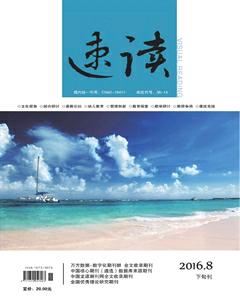The Role of Age in Second Language Acquisition
摘 要:Abstract: There are many factors affecting Second Language Acquisition, such as age, intelligence, environment, and emotion. Age is considered as one of the most important individual factors among them. There are many different features between people who are in different ages in Second Language Acquisition. It is believed that children always have superiority in Second Language Acquisition when compared with adults. This is supported by Lennebergs Critical Period Hypothesis. The researches about age are very important in educational policy-making and curriculum-planning. This paper talks about the relationship between age and second language acquisition and after which some teaching suggestion will be given.
Key words: Critical Period Hypothesis; age; Second Language Acquisition; teaching suggestion
關鍵詞:Critical Period Hypothesis; age; Second Language Acquisition; teaching suggestion
1 Age and Second Language Acquisition
In the past two decades, the discussion of Critical Period Hypothesis has never been stopped among numbers of researchers and linguistics. There has been substantial interest around the question of what kind of role age plays in Second Language Acquisition. There was significant meaning to seek for the notion of Second Language Acquisition, because it could help us comprehend the relationship between the factor of age and Second Language Acquisition fully. At the beginning, Critical Period Hypothesis was just a theory used in first language acquisition. Later, researchers of Second Language Acquisition started to take notice of it. The issue of age, like other individual factors such as gender, aptitude and motivation has been found to be a consistent predictor of success in Second Language Acquisition. In general, the relationship between age and the achievement of Second Language Acquisition is complex and controversial. However, to what extent of a critical period can influence second language learning has been a controversial topic.
2 Features of Learners in Different Ages
In general, children differ from adults in many aspects in Second Language Acquisition. Young children learn simple second language in bilingual kindergarten and they pick out the sounds directly, without reference to their first language, while adults may perceive second language sounds from their first language system sometimes. Differences among second language learners in different age can be easily found, so it is worth discussing the features, to be more specific, the advantages and disadvantages of them to help language learners.
2.1 Features of childhood
Childrens predominance in second language learning is that their brains are the most flexible to accept knowledge from outside world. In this period, their learning abilities are in the similar level and their predominance reveals especially in acquiring pronunciation of language. The disadvantage in this period of time is that their long-term memory is not fully developed, thus children have poorer long-term memory than older people. Whats more, they have a strong tendency to mix their first language and second language together, so their foreign language learning needs extraordinarily excellent language environment, such as bilingual social and living environment which can expose them to the second language and force them to take second language as a tool of thinking, doing games and communication.
2.2 Features of adolescents
In this period, learners cognitive competency has developed to a certain extent which can help them to analyze or describe a language. There is less psychological barrier in adolescent learners than adults learners. In the meantime, adolescents share the same ability that they can take advantage of the regulations to monitor their outputs. However, the unfavorable features of adolescents are that they should work harder than children and they need stronger self-control and self-discipline. As a matter of fact, it is much more difficult for them to stick to their learning goals. Furthermore, its hard for adolescents to accept criticism, so they would not like children to express their ideas eagerly.
3 Suggestions for Second Language Teaching
Different starting ages do have some effect on foreign language learning in some formal settings, but the effect is not only connected with starting age but also combined with the other factors. Only by combining the age factor with other factors can age produces effect and shows its superiority. Those important factors in second language learning include the design of the teaching course and syllabus, the quality of the educational materials, the level of the teachers, the environment of second language learning and other external or internal factors. That is to say, foreign language learning and teaching at an earlier age for children can not guarantee their language superiority unless there are highly qualified teachers, painstakingly designed courses and favorable foreign language environment. Moreover, interest and good learning habits are also among them. Since foreign language learning and teaching is a dynamic and complicated process that is thought to be continuing throughout life, more evidence is needed to study the different aspects of learning, the different stages and styles, with the thought given to linguistic, developmental, cognitive, and maturational factors. Further study into the connections between language and age mechanisms of foreign language learning and teaching will be conducted in the coming days.
4 Conclusions
To conclude, the relationship between age and the achievement of Second Language Acquisition is complex and controversial. Different linguists and researchers have different views about the age of Critical Period Hypothesis. We know that there are clear different features among learners in different ages and different kinds of learners have their own respective advantages and disadvantages. Theres no evidence to clarify that children are superior to adults in second language. To be a good English teacher, we should teach the students in accordance with their natural abilities.
References:
[1] Johnson, Newport. 1989. Critical period effects in second language learning: The influence of maturational state on the acquisition of ESL[J]. Cognitive Psychology.
[2] Krashen. 1973. Lateralization, language learning, and the critical period: Some new evidence [J]. Language Learning.
[3] Lightbown. 2006. How language are learned [M].Oxford University Press.
[4] Scovel. 2000. A critical review of the critical period research [J].Annual Review of Applied Linguistics.
作者簡介:
郭彩鳳(1990.02~),女,漢族,專業:外國語言學及應用語言學,學歷:文學碩士,研究方向:英漢對比翻譯。

